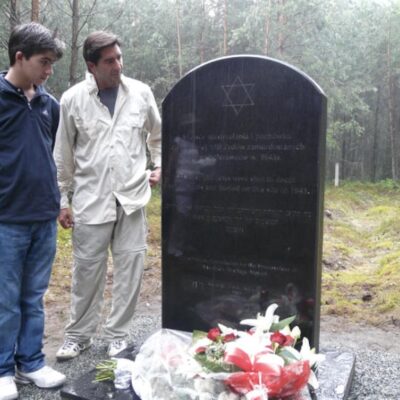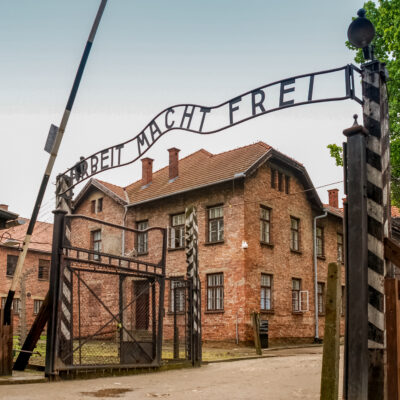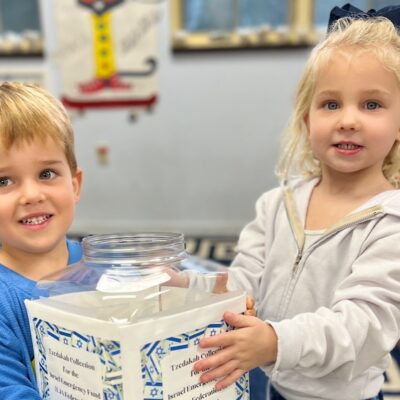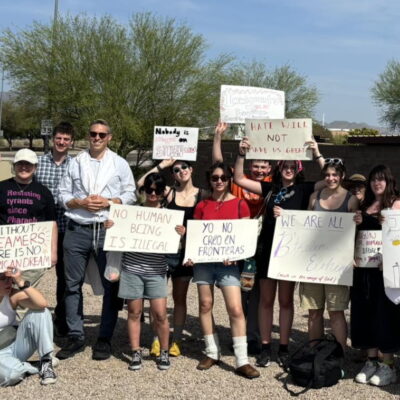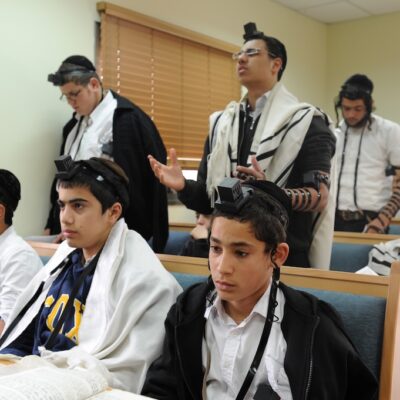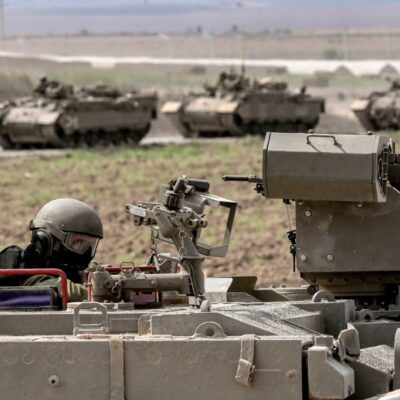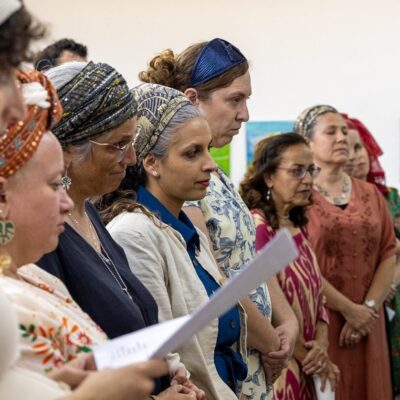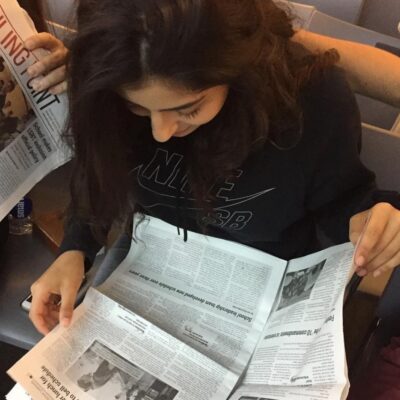K'VOD HAMET
How a bar mitzvah project led to an ongoing effort to find, commemorate mass graves from the Holocaust
The effort, which started in 2009, has so far identified dozens of sites of Nazi atrocities in Poland
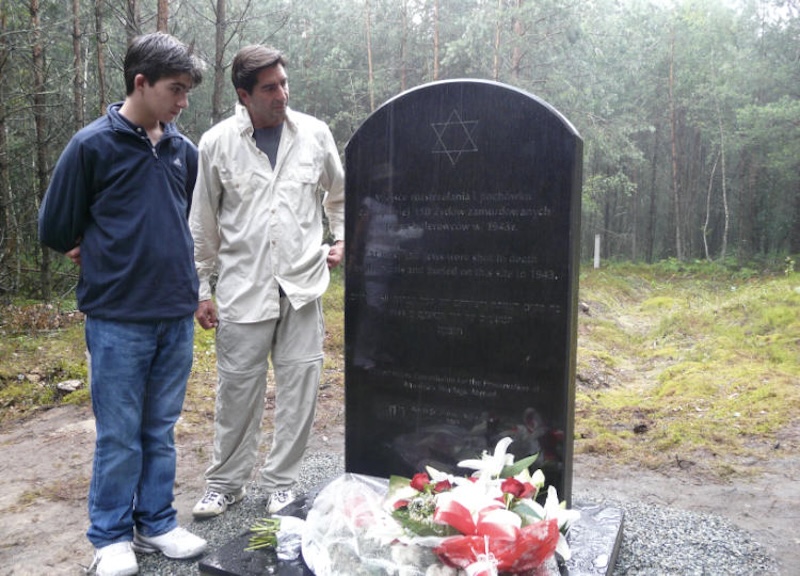
courtesy
Harley Lippman stands with his son at the unveiling of a monument to honor the Jews killed in a 1943 Nazi massacre in Wólka Dobryska, Poland, on July 16, 2009.
Years before the Wannsee Conference — the two-hour meeting in 1941 that sealed the fates of millions by formalizing Hitler’s Final Solution — occupied Europe was already becoming a mass burial ground for Jewish people.
In September 1939, when Nazi military forces invaded Poland, several police units followed on their heels. Aiding the Nazis with combat operations were the Einsatzgruppen, known now as “mobile killing squads” and the Order Police — the latter of which contributed to German war efforts on a volunteer basis. Throughout the war, these police units also carried out numerous and escalating massacres of Jews and Poles — most infamously slaughtering 33,771 Jews in Babyn Yar, Ukraine, in 1941. Across Poland, those killed were buried in mass graves, many unmarked.
For the better part of 16 years, Harley Lippman — a Jewish philanthropist and grand marshal of this year’s Israel Day on Fifth parade in New York — has enlisted and funded a team in Poland to research, locate and memorialize those killed.
According to Lippman, the initiative started with a bar mitzvah project. For his oldest child, the family funded an orphanage in Cambodia. For the second child, they restored a Torah and donated it to the Jewish community of Poland — in the process, Lippman recalled, developing a relationship with Michael Schudrich, Poland’s chief rabbi.
When the bar mitzvah of Lippman’s youngest child came around, Schudrich introduced them to the history of the unmarked mass graves. “As wonderful as a party is, we wanted to put meaning into it,” he told eJP. “Working with [Schudrich], we learned that there is an aspect to the Holocaust that is largely unknown.”
Often with help from local collaborators, Lippman recounted, scores of attacks were committed over the course of the war, marring swaths of territory that had once held vibrant Jewish life within their towns, villages and fields with shallow and quickly dug mass graves, some in which victims were buried alive. “Witnesses would describe the ground moving,” said Lippman.
The stories Schudrich shared resonated, said Lippman, because of a family connection to a similar kind of violence — his own grandmother had witnessed three pogroms in her lifetime. “She would tell me stories about the pogroms that she witnessed,” he told eJP. “She witnessed three pogroms, and her parents told her when the third one comes, run to America, because there’s no future for you here.”
After the initial trip, Lippman continued investing in the project. Years on, the team Lippman funds has located and memorialized some 30 graves, he told eJP. The process of locating the graves can be time-consuming, he said, requiring the team to travel and track down witnesses and their descendants.
“They go around, village to village, looking for evidence of mass graves of Jews that have been forgotten,” said Lippman. “We’ve done it even for one Jew. We’ve done it when thousands of Jews were killed.”
Once the graves are located, they’ll hold a burial service and erect a memorial, inviting local religious leaders as well as schoolchildren to bear witness and adopt the caretaking of the grounds. Lippman has been surprised by the level of compassion the locals who come out have for what took place, he said.
“I was worried if it would be any aspects of resentment or antisemitism, but not at all,” he said. “This is in their neighborhood. It happened to their neighbors, their parents or grandparents’ neighbors.”
In the last few years, efforts to research, locate and commemorate these graves have broadened, with Poland holding a state burial for 700 victims of mass executions last September. Participants in the process of discovering and marking these graves range from governmental agencies, to private foundations — to private philanthropists.



